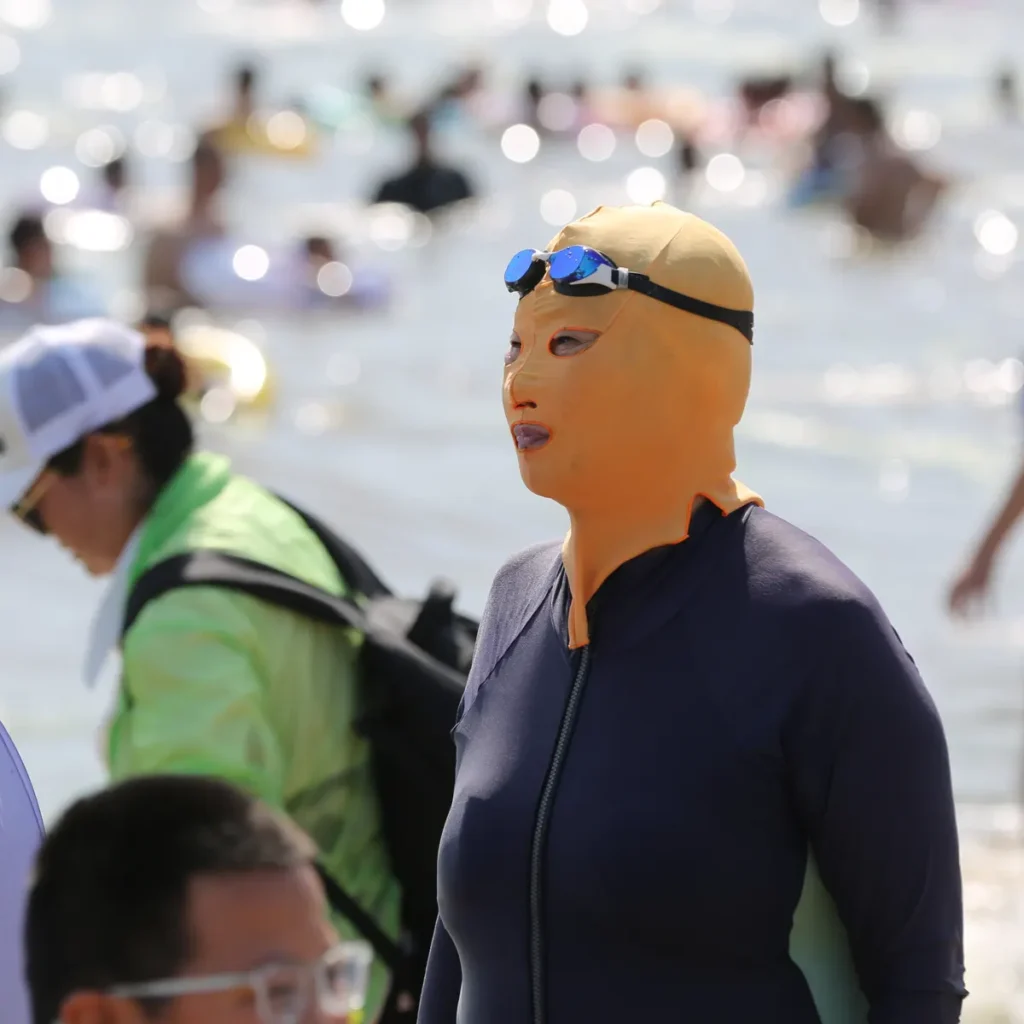The Northern Hemisphere is witnessing record-high temperatures due to a mix of El Niño and heat-trapping air pollution. This unprecedented heat has birthed an unusual fashion trend in Beijing: the “facekini.” Designed to block sunlight, the facekini is a UV-resistant head covering, leaving only the eyes, mouth, and nostrils exposed. With ground temperatures reaching a staggering 176 degrees Fahrenheit, the facekini’s popularity has surged. Not just a fashion statement, the facekini addresses both practical and cultural concerns in China.
Li Xuyan, a 17-year-old student, expressed fears of skin diseases due to excessive UV exposure. The desire to avoid tanning and “sun spots” is another driving factor behind the facekini’s rise. Hong, a shop owner, stated, “We’re fully prepared to avoid getting sunburned and tanned.” Beyond facekinis, Beijing residents are also donning protective arm sleeves and broad-brimmed hats with built-in fans. The Byte suggests that as global temperatures rise, we might see more such unconventional heatwear trends.
For those hesitant about the facekini, the CDC recommends sunscreen and wide-brimmed hats as effective UV protection. It’s crucial to remember that clouds don’t block UV radiation, making sun protection essential even on overcast days. A snapshot from Qingdao in June shows women in facekinis cooling off in the water, highlighting the trend’s widespread adoption. Facekinis, resembling balaclavas, are crafted from lightweight fabrics like polyester to ensure comfort. Originating in Qingdao, a city known for its beaches, the facekini concept isn’t new to China.
Similar Posts
Dong Wei, a merchant, revealed that facekini sales have grown by 30% year-over-year at her company. Sun protection isn’t just a concern for women; men too are increasingly purchasing UV-resistant accessories. JD, a popular shopping platform in China, reported a doubling in sales of sunproof hats for men. The soaring demand for facekinis is a testament to China’s commitment to skin protection amid rising temperatures. Recent temperatures in parts of China have peaked at 52.2 degrees Celsius, further fueling the facekini frenzy. Although the recent surge in popularity is notable, facekinis have been available since 2004.
A video by Pubity highlights the facekini trend, captioned, “In scorching China, “facekinis” are the hottest new fashion as temperatures shatter records.” Social media reactions to the facekini vary, with some joking about bank heists and others pointing out societal double standards. One user commented on the irony of facekinis being accepted while Muslim women covering themselves face criticism. Another user highlighted the underlying issue of colorism in the facekini trend, suggesting it’s not just about sun protection.
The Byte’s perspective on facekinis is clear: they might seem dystopian, but they’re a practical response to our changing climate. As the world grapples with rising temperatures, innovative solutions like the facekini become both a fashion statement and a necessity. The facekini phenomenon underscores the lengths people will go to for skin protection in extreme conditions. With the planet literally on fire, unconventional solutions like the facekini might just become the new norm. As the facekini trend grows, it’s a stark reminder of the tangible impacts of climate change on daily life. The facekini’s rise is more than just a fashion trend; it’s a reflection of a world adapting to its changing environment. While the facekini might seem unusual to some, it’s a pragmatic solution in a world where UV protection is becoming increasingly vital. As we witness more such innovations, one thing is clear: the world is creatively adapting to the challenges posed by climate change.



